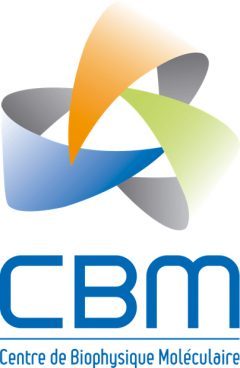Research theme
De par sa nature hautement électrophile, la molécule d'ADN peut-être en permanence modifiée par des agents chimiques (alkylation, oxydation, etc.) ou physiques (température, radiations UV et gamma).
Dans de nombreux cas, ces modifications de la structure de l’ADN sont associées à des mécanismes de mort cellulaire et de mutagenèse. Ils participent ainsi aux processus de carcinogénèse et de vieillissement. Pour pallier les effets délétères des modifications chimiques de la molécule d’ADN, les organismes vivants ont développé de nombreux mécanismes de réparation de l’ADN qui ont été, dans leurs principes de base, conservés de la bactérie jusqu’à l’Homme.
De plus, tous les processus impliqués dans le métabolisme de l’ADN (réplication, transcription, recombinaison et réparation) sont eux-mêmes associés à une dynamique structurale de l’ADN qui fait intervenir un grand nombre de protéines susceptibles de modifier sa structure. On parle ici de protéines de structure de l’ADN ou « ADN chaperones ».
Dans ce cadre, l’équipe s’intéresse aux bases moléculaires de la reconnaissance et de l’élimination des bases oxydées de l’ADN par les ADN glycosylases du système de réparation par excision de base. Nous observons également la façon dont la structuration de l’ADN par les ADN chaperones peut moduler l’efficacité de ces systèmes.
The organism’s life and its durability through up generation depend on the stability of the genetic material contained in its DNA double helix and on the dynamic behavior of DNA. Because of its electrophilic character, DNA is continuously exposed to the deleterious effects of chemical (oxidation, alkylation …) and physical (temperature, UV and gamma radiations …) agents which modify all its constitutive elements (base, sugar and phosphodiester backbone).
In many cases, DNA modifications interfere with DNA replication and lead to cell death or mutagenesis. Thereby, carcinogenesis and aging processes are often associated with the persistence of DNA lesions. To counteract these deleterious effects, the living organisms have evolved numerous DNA repair strategies which have been conserved from bacteria to higher eukaryotes. In addition, DNA transactions such as replication, transcription, recombination and repair are itself associated with the structural dynamics of DNA resulting from its interaction with “DNA chaperons”.
Within the framework, we focus our investigation on the molecular basis of the recognition and removal of oxidized bases by the DNA glycosylases, the enzymes which initiate the base excision repair pathway. In addition, we examine how the DNA chaperone-induced DNA super-structures can modulate the efficiency of DNA glycosylases.
DNA repair
On this theme, the main goal of the team is to elucidate at the atomic level the outstanding mechanisms by which DNA glycosylases (Fpg in bacteria and hOgg1 in Human) are able, among a vast excess of normal nucleobases, to detect, recognize and remove oxidized purines such as 8-oxguanine (mutagen lesion) and Fapy residus (mutagen and lethal lesions).
On the base of our biochemical studies, we have recently made a structural approach by crystallography of complexes enzyme/damaged DNA. By this last approach, we hope to design and synthesize selective inhibitors of these enzymes for anticancer therapy strategies.
DNA Chaperons
On this subject, we try to understand the precise role played by DNA chaperons in the structural dynamics of the bacterial and mitochondrial DNAs.
We conduct this approach by studying the DNA binding properties of the DNA chaperons MC1 (archeabacteria), HU (bacteria) and Abf2/Tfam (mitochondria) to linear or circular DNAs (supercoiled or relaxed).
We also study how the super structure of DNA can modulate the accessibility of DNA glycosylases (Fpg and hOgg1) to oxidized purines.
